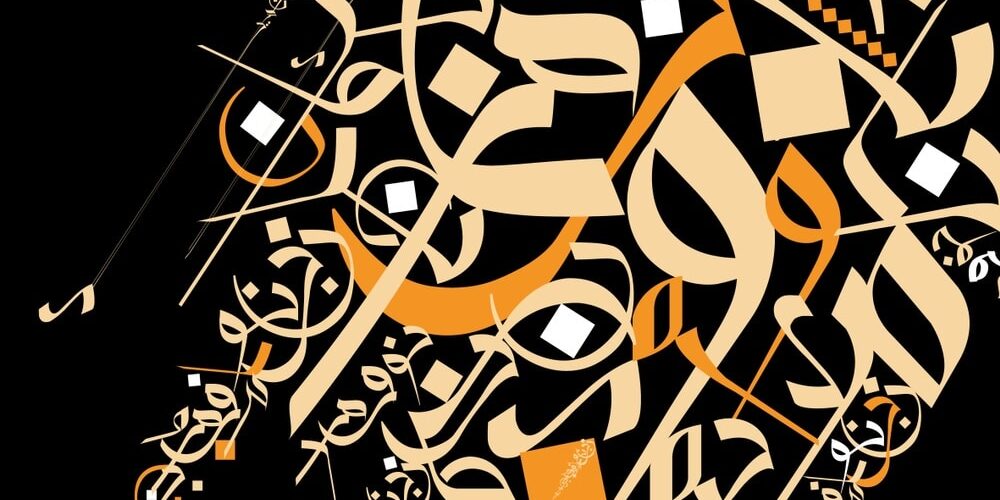Arabic Calligraphy Styles
Arabic calligraphy is a form of visual art that has played a significant role in the culture and history of the Arab world. It is the art of writing Arabic script in a decorative and visually appealing way. It is considered one of the most highly respected forms of art in the Arab world and has been used to adorn everything from mosque walls and manuscripts to textiles, pottery, and even architecture.
The origins of Arabic calligraphy can be traced back to the 7th century with the advent of Islam. The earliest examples of Arabic calligraphy were found in inscriptions on the walls of the Kaaba, the holiest site in Islam, and on the early Islamic coinage. The earliest form of Arabic script was known as Kufic, which is characterized by its angular and geometric shapes. Kufic script was used extensively in early Islamic manuscripts and architectural decoration.
As the Islamic empire expanded, new forms of Arabic script were developed to suit different cultural and linguistic needs. The Naskh script, for example, was developed during the 10th century and is characterized by its clear and legible letter forms. It was used extensively in the production of Qurans and other religious texts. Another important script, Diwani, was developed during the Ottoman Empire and is characterized by its ornate and cursive letter forms. It was used primarily in official documents and correspondence.
Some of the most notable calligraphers in history include: -Yaqub Al-Musta’simi, the 13th century Abbasid Caliph who was renowned for his skill in calligraphy and is credited with standardizing the Diwani script. -Ibn Muqla, a 10th century Persian calligrapher who developed a system for proportionally spacing letters in calligraphy and established the basic forms for the Naskh, Thuluth and other scripts. -Ibn al-Bawwab, a famous calligrapher from the 11th century known for his ability to create calligraphic pieces on a large scale.
In modern times, Arabic calligraphy has been adapted to suit new mediums and technologies. Calligraphers now use digital tools to create calligraphic designs, while calligraphic elements continue to be incorporated into graphic design and advertising. Furthermore, some contemporary artist have started experimenting with Arabic calligraphy as a means of self-expression, turning it into a form of modern art.
As mentioned earlier, there are several different styles of Arabic calligraphy, each with its own distinct characteristics. Some of the most important styles include:
Kufic: As the oldest form of Arabic script, Kufic is characterized by its angular and geometric shapes. It is often used in early Islamic manuscripts and architectural decoration.
Naskh: Developed during the 10th century, Naskh is characterized by its clear and legible letter forms. It is widely used in the production of Qurans and other religious texts.
Diwani: Developed during the Ottoman Empire, Diwani is characterized by its ornate and cursive letter forms. It was used primarily in official documents and correspondence.
Riq’a: This script is known for its simplicity and readability. It is widely used in modern Arabic writing and printing.
Thuluth: This script is characterized by its elegant and flowing forms. It is used in architectural decoration, Qurans and poetry.
- Calligraphy and Symbolism: Arabic calligraphy is rich in symbolism and meaning. The script itself is considered sacred, and is often used to convey religious and spiritual messages. The use of certain letters, words, and phrases can also convey specific meanings and ideas. For example, certain phrases from the Quran, such as “Allah,” “Muhammad,” and “Bismillah,” are considered to be particularly powerful and are often used in calligraphic compositions.
- Calligraphy and Ornamentation: Arabic calligraphy is often used in combination with other forms of ornamentation, such as geometric patterns and floral motifs. This is known as “arabesque” which is a form of decoration consisting of intertwined flowing lines and shapes, often used in Islamic art. This combination of calligraphy and ornamentation creates a rich and complex visual language that is both beautiful and meaningful.
- Calligraphy and Modern Design: Arabic calligraphy continues to be an important source of inspiration for modern designers. The use of calligraphy in graphic design, typography, and advertising has become increasingly popular in recent years. The use of calligraphy in modern design often involves the use of contemporary techniques and technologies, such as digital tools and software, to create new and innovative forms of visual expression.
- Calligraphy and Education: Arabic calligraphy is considered an important part of traditional education in the Arab world. It is taught in schools and institutions, and is often considered a rite of passage for students of the Islamic tradition. Calligraphy continues to be studied and practiced by scholars, artists, and enthusiasts all over the world.
In conclusion, Arabic calligraphy is a rich and complex art form that has played a significant role in the culture and history of the Arab world. It is the art of writing Arabic script in a decorative and visually appealing way. It has evolved over time and has produced many different styles and forms, from the geometric shapes of Kufic to the clear and legible forms of Naskh, to the ornate and cursive forms of Diwani.
Calligraphy has been used to adorn a wide range of objects, from books and manuscripts to ceramics, textiles, and architectural decoration. It has played an important role in the preservation and transmission of Islamic literature, as well as in the formation of Arab identity. It is considered a sacred art form, and often used to convey religious and spiritual messages.
In modern times, Arabic calligraphy continues to be an important source of inspiration for modern designers, many contemporary artists have begun to experiment with new forms and styles of calligraphy. It is widely studied and practiced by scholars, artists, and enthusiasts all over the world, and its tradition is being passed on to the next generation. Arabic calligraphy is a beautiful and meaningful art form that is worth studying and appreciating.







